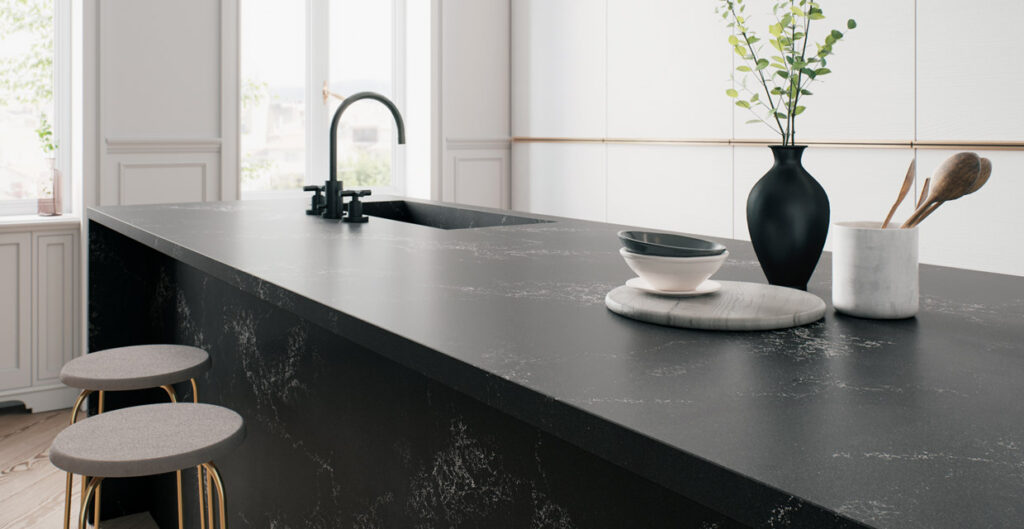How to Create a Sustainable Kitchen
5 min read
In the kitchen, sustainability is all about making choices that will protect the environment for future generations. Small changes made in daily cooking and food preparation habits contribute to change on a grand scale.
A sustainable kitchen means reducing the environmental impact of food preparation and consumption.
There are many ways to create a sustainable dining space, but some of the most important considerations include using sustainable materials, investing in energy-efficient appliances, and choosing sustainable food.
With the current state of the environment, creating a sustainable kitchen is more important than ever. Here are some tips to save the planet by making eco-friendly and conscious choices.

Sustainable materials for a sustainable kitchen include bamboo, cork, and recycled glass. These materials are all environmentally friendly and will help to reduce the carbon footprint. Furthermore, sustainable materials are often more durable than traditional materials, meaning they will last longer and reduce the need for expensive repairs in the long run.
When remodeling or designing a kitchen, choose sustainable countertop materials that are more environmentally friendly, such as quartz. Engineered quartz is a man-made material derived from natural quartz minerals and resins, making it an eco-friendly option. That is why quartz is durable, resilient, sustainable and even recyclable.
Here are some things to look for when choosing eco-friendly products for a residential or commercial kitchen space:
● Products made from recycled materials
● Products that are recyclable or compostable
● Products with minimal, recyclable or reusable packaging
● Products made from renewable resources
● Products with low embodied energy (the energy required to produce a product)
When eco-friendly products are frequently bought, companies are motivated to work towards a more sustainable future with their products.

An eco-friendly kitchen reduces food waste, recycles, composts, and uses sustainable practices to reduce the amount of food waste produced. By making some simple changes, creating a sustainable kitchen design is inevitable.
● Planning ahead: Meal planning can help achieve sustainability by buying the exact ingredients in the necessary amounts, using leftovers in creative ways can help people make the most of what they have. Before cooking, take inventory of what is in hand and plan the meals accordingly. This will help avoid buying unnecessary items.
● Shopping smart: When grocery shopping, be mindful of expiration dates and try to purchase items that can be used in multiple dishes to get the most benefit. In addition, when shopping for groceries, it is better to choose items that are locally grown and produced for earth-friendly meals.
● Composting: Get creative with the leftovers and transform them into new and exciting dishes. Composting is a great way to cut down on food waste. Not only does it reduce the amount of waste that goes to landfill, but it also enriches the soil in the garden.
The cookware is one of the most crucial considerations when establishing a sustainable dining space. Investing in sustainable kitchen materials that are eco-friendly and long-lasting can help reduce the impact on the environment and construct a healthier planet.
Initially, the investment in long-lasting cookware may be higher than purchasing lower-quality items, but it is much more economical in the long run.
Durable pots and pans made from materials like cast iron, stainless steel or ceramic will last for decades with proper care, whereas cheaper options made from aluminum or non-stick coated metals will need to be replaced every few years. Disposable or cheap cookware often ends up in landfills and taking up space.
A sustainable kitchen is eco-friendly, energy-efficient and durable. When eco-friendly and energy-efficient appliances are used in the kitchen, it can help reduce the home’s overall carbon footprint.
Responsible companies work to improve their environmental impact by using sustainable practices. Many common kitchen appliances, such as refrigerators and dishwashers, use a lot of energy.
Choose energy-efficient appliances with the Energy Star label that consume less water and electricity to help reduce the carbon footprint. This can even help save money on utility bills.
In addition, one of the conscious choices can be investing in Caesarstone’s eco-friendly kitchen countertops, like 1001 Riverlet from the Pebbles Collection. Quartz surfaces are not only chic, functional and resilient, but they are also an environmentally friendly option.
Additionally, installing low-flow fixtures like faucets and showerheads can reduce water consumption in the house.
Picking out the most energy-conscious stove can be a tough choice due to the fact that there are several unique products to choose from.
Gas stoves are preferred because it is easy to control their temperature, and they heat up instantly.
That being said, even though they are relatively energy-efficient, they can negatively influence the overall air quality in a house.
On the other hand, induction cooktops use less than half the energy of standard stoves with their electromagnetic energy quality. They are surely energy-efficient but require certain metal cookware sold at higher prices.
Overall, homeowners should opt for an energy-efficient stove that utilizes clean, renewable energy sources.

Everyone has a role to play in creating a more sustainable future. As more people demand eco-friendly products, companies will continue to innovate and create new sustainable solutions.
More people need to be aware of how important sustainability is because our planet depends on it. If everybody does their part to live more sustainably, we can make a difference in the future of our planet.
Homeowners can visit the Caesarstone “Where to Buy” page to find eco-friendly and innovative kitchen surfaces.
{{ subtitle }}
{{ i.desc }}
{{ subtitle }}
{{ subtitle }}
